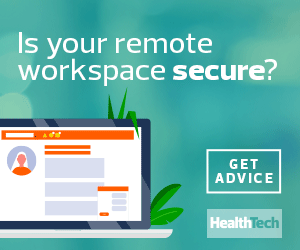1. Accelerate Your Plans for Cloud Migration
The pandemic has driven organizations to look more toward the cloud than ever before. For some healthcare teams, it’s the first time they’ve embraced the cloud — because they can get and/or scale-up virtual desktop infrastructure in the cloud quicker than scaling up on premises. That shift has been crucial for ramping up for expanded telehealth delivery.
With the cloud, it’s easy to scale data storage up and down based on needs, producing savings if needs change. With on premises storage infrastructure, you can’t get money back if you have purchased too much storage space. Perhaps more important, the cloud streamlines access to information for an increasingly large remote workforce.
2. Don’t Neglect Your Data Center
We have seen hospitals resume plans for their data centers — including upgrades and refreshes — because you can only leave a data center alone for so long before it could cause issues with your infrastructure. If you’re not paying attention, failures can occur that bring systems down and disrupt care and operations.
Hospitals are 24/7 operations, and continuity is even more critical now. Even though most healthcare organizations are working to contain costs, they’re starting to recognize the value of investing in hybrid data centers as teams continue working remotely. CDW offers a range of no-cost data center assessments to help assess and avoid risk.
3. Consolidate (or Cut) Unused Apps and Utilities
If a hospital has 600 applications, does it need them all? Can users tap similar functionality within another application? You’re probably already paying for it. App rationalization will take time if a maintenance contract remains. Still, taking steps to reduce licensure or to eliminate surplus apps is probably the simpler financial move.
Telecom expense management is also a great assessment. Are all of your data circuits on a contract? Are you still paying for an active data circuit for a vacated building? If so, you’re wasting money. The process can determine your rebate from the telecom company due to overpayment, and the assessor takes a one-time percentage of the savings. The hospital reaps all the cost savings going forward.
READ MORE: Learn how to rein in costs during disruption.
4. Allow a Managed Services Provider to Carry the Load
At a minimum, IT departments strive to have primary and secondary support at all times, so a managed services provider can handle database administration support, among other augmented tasks, on a temporary or on-demand basis amid staff furloughs and cutbacks. These scalable services can cut IT costs by as much as 40 percent.
Managed services can assume larger duties such as cloud deployments, mobile initiatives and security. This is valuable for health IT, where competition for talent is already high, to handle turnover and recruiting as the pandemic enables remote work setups that could possibly lead employees to take jobs elsewhere in other, higher-paying industries without relocating.
5. Support Remote Work and Transform Office Space
COVID-19 has shown that it’s OK to have a telecommuting staff. If you have an outstanding IT employee at work, they’ll be outstanding at home. The best place for an airplane to be is in the sky — because it’s moving people and making money — and the same thinking applies to hospitals: Clinical spaces, after all, drive revenue. Converting hospital business space to a revenue-producing clinical space is a smart move.














